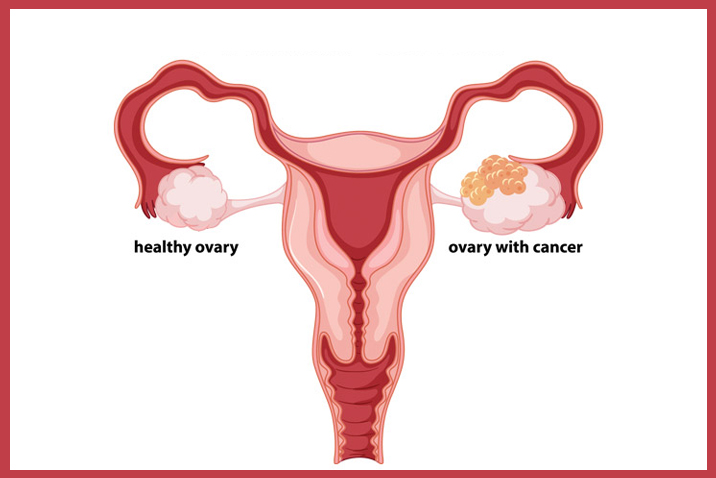

OVARIAN TUMOR IN PREGNANCY
INCIDENCE: The incidence of ovarian tumor with pregnancy is about 1 in 2,000. Although serous cystadenoma is common even during pregnancy the incidence of germ cell tumor (dermoid) is increased two fold during pregnancy compared to the non-pregnant state. -This is because of its
high prevalence during childbearing period and its detection due to increased complications during pregnancy. -Malignant ovary is extremely rare during pregnancy.
EFFECTS OF TUMOR
On pregnancy: There is increased chance of
(1) impaction leading to retention of urine,
(2) mechanical distress in presence of large tumor,
(3) malpresentation, and (4) Non-engagement
of the head at term.
- On labor: There is chance of obstructed labor if the tumor is impacted in the pelvis.
EFFECTS ON THE TUMOR: All the complications that occur in the non-pregnant state are likely to occur
with increased frequency except malignancy.
1) Ovarian masses relocate (change their location) in
the abdomen as pregnancy advances;
2) Torsion of the pedicle — usually occurs during 8–10 weeks of pregnancy as the tumor is out of the pelvis and in the early puerperium because of lax abdominal wall;
3) Intracystic hemorrhage is due to increased vascularity;
4) Rupture following intracystic hemorrhage
or due to impaction in labor;
5)Infectionis more common following abortion and delivery. Physiological
event of thrombosis invites sepsis.
DIAGNOSIS: Patient may remain asymptomatic or presents with the symptoms of
(a)retention
of urine due to impaction of the tumor,
(b) mechanical distress due to the large cyst, and (c) acute
abdomen due to complications of the tumor. Abdominal examination reveals the cystic swelling
felt separated from the gravid uterus.In later months of pregnancy, confusion may arise. The patient is examined vaginally in head down Trendelenburg position to elicit the groove between the two swellings,
e.g. gravid uterus and the ovarian tumor (Hingorani sign). Ultrasonography is useful to have the details
of pregnancy and the ovarian tumor. MRI is very useful for some cases with more accurate information
about the tumor, its nature and about the pregnancy profile.
Differential diagnosis includes pelvic kidney, uterine fibroids, colorectal or bladder tumors.
Management: The principle is to remove the tumor as soon as the diagnosis is made.
DURING PREGNANCY
Uncomplicated —The best time of elective operation is between 14th week and 18th week, as the chance of abortion is less and access to the pedicle is easy. Beyond 36 weeks— The operation is better to be withheld till delivery and the tumor is removed as early in puerperium as possible.
Complicated—The tumor should be removed irrespective of the period of gestation.
Adequate pain relief is ensured for 48 hours following surgery.
DURING LABOR:
1) If the tumor is well above the presenting part, a watchful expectancy hoping for vaginal delivery is followed;
2) If the tumor is impacted in the pelvis causing obstruction, cesarean section should be done followed by removal of the tumor in the same sitting.
DURING PUERPERIUM: On occasion, the diagnosis is made following delivery. The tumor should be
removed as early in puerperium as possible. Following operation, the specimen is sent for histological examination.
OVARIAN CANCER: Overall incidence of ovarian cancer in pregnancy is about 1 in 30,000. Most
ovarian tumors in pregnancy are either germ cell tumors or epithelial cancer of early stage and lowgrade variety. Treatment in majority of cases is continuation of pregnancy and preservation of fertility.
When the tumor is found malignant on laparotomy, surgical intervention should be similar to that of non-pregnant patient. Preoperative tumor markers like serum CA-125, b-hCG and AFP levels increase in pregnancy. They have prognostic value to monitor the course of the disease. Pregnancy usually does
not alter the prognosis of most ovarian cancers.
HOMOEOPATHIC MEDICINES FOR OVARIAN TUMOUR DURING PREGNANCY
1) Baryta iodide:- this medicine provides instant relief and is highly effective in the cases of cancer tumors and ovarian tumors.
2) Calcarea fluorica:- helpful in treating lumps and knots, it cures hardness and abnormal growth of cells. It also prevents the growth of cancerous cells and is a suitable remedy.
3) Silicea:- An effective painkiller which provides relief in pain caused by all types of cancer in women.
4) Conium:- Helpful in curing tumours of the uterus. This Homoeopathic medicine provides relief from pain as well as scarred tissues.
5) Phytolacca:- this proves to be highly effective in uterine tumours. It works by curing painful, hard, and purple tumours. Especially effective in cases of fibroid tumors of the uterus.